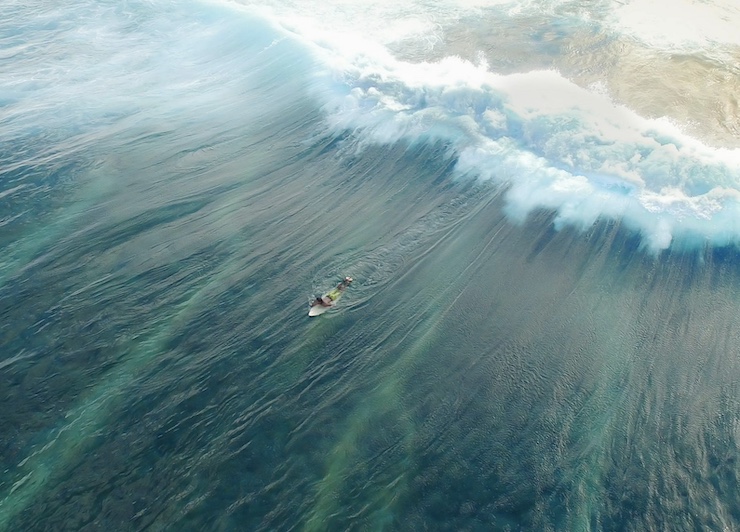
As the East Coast of the United States heads into its first heatwave of the summer, beaches up and down the shoreline are preparing for an influx of visitors. New York alone has 1,300 public beaches spread out over 127 miles along the Atlantic Ocean coastline. Though New York’s beaches don’t get as crowded as those in New Jersey and Massachusetts, they will still be visited by millions of people over the course of the summer. Over the last few years, officials have begun using drone technology to help keep New York’s beachgoers safe.
One of the biggest concerns for people planning on enjoying the beach and for those tasked with patrolling beaches for safety is monitoring for sharks. Between 1837 and the early 2000s, there had only been 20 unprovoked shark attacks reported in New York. However, shark sightings and attacks along New York’s coastline have continued to increase over the years. In 2022, there were 6 shark attacks in only 3 weeks at New York beaches. Sharks are extremely stealthy. When a person is in the water, it can sometimes be impossible to see a shark, even if it’s only an arm’s length away. Particularly susceptible to a shark attack would be one of the many surfers enjoying the deeper waters off the coast of New York. When a surfer is resting atop their board, waiting to catch a wave, they look very much like a seal, a primary source of food for a shark.
Studies have shown that one of the most effective ways to monitor for sharks is from an aerial vantage point. In the past, this has been done with helicopters and small airplanes. The drawback is that using manned aircraft is very expensive, so it is a method that can only be used occasionally. This is why lifeguards and the New York Police Department (NYPD) began using a method proven successful in Australia. Several years ago, Australia began monitoring beaches for sharks and crocodiles with inexpensive, easy-to-operate drones equipped with high-resolution cameras.
The NYPD began its drone shark watch program at Jones Beach, one of New York’s most popular beaches, in 2017. They initially started with a fleet of 19 drones that are operated by both lifeguards on the beach and by police from a nearby command center. Park Police Captain Rishi Basdeo explained that with drones, officers and lifeguards can work together to prevent shark attacks, even before a shark is spotted in the area, by monitoring schools of fish too. “You’re getting with the drone a real supreme aerial view of what’s going on in real time on the waterway,” said Captain Basdeo. “If a shark is in close proximity to the bathing area — or even before we get schools [of fish] there — we are already making that decision, and the lifeguards will stop people from swimming and just safely guide people out of the water.”
At first, some people were concerned that the drones would be invasive to those enjoying a day at the beach, something Captain Basdeo said was the furthest thing from the truth. “We’re on strict guidelines when we fly and operate these drones. It is not used to surveil the public. It is used to keep them safe,” Captain Basdeo said. “We don’t fly, or we try not to fly, over large groups of people.” In 2023, Governor Kathy Hochul announced that the state of New York would be receiving $1 million in funding to purchase 42 new drones and accompanying software to further expand the drone shark watch program.
For the 2024 season, NYPD Deputy Commissioner of Operations Kaz Daughtry announced on X (formerly known as Twitter) that New York would be further expanding drone operations to keep beachgoers safe this summer. While using drones to search for sharks, lifeguards and the NYPD more often than not would also spot swimmers struggling in the water. The drones were better at spotting these individuals than lifeguards posted in their towers. “This summer,” Deputy Commissioner Daughtry posted, “we will be utilizing drones that can deploy a flotation device to swimmers in distress. We can also use these drones to communicate with the swimmer in distress while help is on the way. Enjoy the sunshine, NYC. We have the Watch.”
New York City Mayor Eric Adams explained that lifeguard staffing has been difficult recently and that he is glad that drones will be on hand to help fill any gaps. As of now, New York City has only hired 230 of the required 600 lifeguards to monitor the city’s 14 miles of beaches. “By utilizing drones at our beaches, we can help swimmers in distress, monitor for sharks, help spot a missing child on a beach, and more,” a spokesman from the Mayor’s office explained. “We continue to work to ensure New Yorkers can safely enjoy our beaches this summer.” Even though New York beaches will have fewer lifeguards on duty this summer, with the addition of dedicated police officers and an increased fleet of drones, beachgoers can safely enjoy the sand, sun, and surf.
|